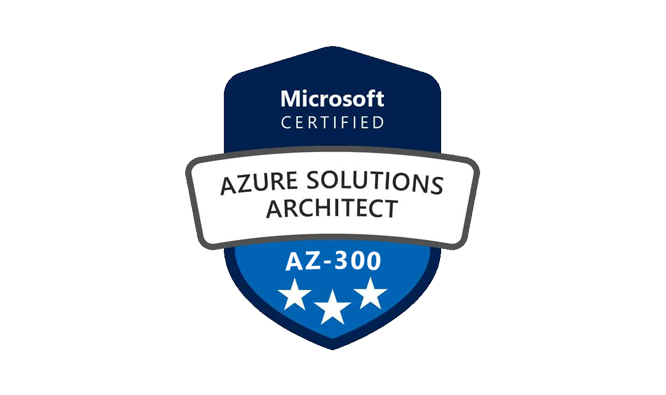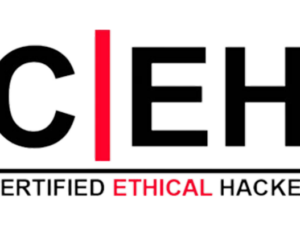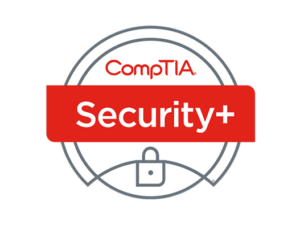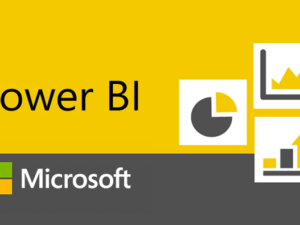Microsoft Certified Expert: Azure Solutions Architect (AZ-300) course provides you fully hands-on driven training on Architect Technologies offered by Microsoft Azure. Also, the learner will be able to plan the architectures and their design patterns, choose the appropriate Compute, Integration and Storage solutions, Create PaaS solutions and configure authentication and authorization for those solutions.
Microsoft Certified Expert: Azure Solutions Architect (AZ-300)
- Description
- Curriculum
- FAQ
- Reviews

Certs Learning’s Microsoft Certified Expert: Azure Solutions Architect (AZ-300) training provides you an associate-level insight into different services of Microsoft Azure such as Storage, Virtual Machines, Websites, Cloud Services, Azure Active Directory, Virtual Networks, Backup & Site Recovery through a Hands-On. You will be able to Deploy, Configure, Monitor, and Diagnose Cloud Services, Create and manage Azure AD tenants and Configure Application Integration with Azure AD.
- IT Administrators looking for hands-on training on Azure Infrastructure
- Professionals willing to attain Microsoft Certified Azure Administrator Badge
- New entrepreneurs/companies who wishes to build their Infrastructure solution on the cloud at a fraction of the cost of traditional methods
- Cloud Evangelists
- Foundational knowledge on Cloud architecture
- Fundamentals of Cloud Computing
- Basic understanding of virtualization, networking & databases
- Proficiency in using Visual Studio IDE, PowerShell and Command-Line Interface
- Coding experience in C# (.NET Framework) – Optional
-
1Manage Azure Subscriptions, Resources, Storage and Server Migration
Learning Objectives: In this module, you will explore Azure monitoring capabilities using Azure alerts, Azure activity logs, and Log Analytics. You will also learn how to manage Storage using Azure Storage Explorer and perform the migration.
Topics:
- Azure Subscriptions and Resources
- Azure Storage
- Server Migration to Azure
Hands-on:
- Explore Azure Monitoring capabilities using Azure Alerts, Activity Logs, and Log Analytics
- Implement and Manage Azure Storage using Azure Storage Explorer
- Perform Server Migration to Azure
-
2Deploy and Manage Virtual Machines and Configure Virtual Networks
Learning Objectives: The module covers the aspects of deploying Azure VMs using Portal, PowerShell, and ARM templates. Also deals with VM Monitoring, Backup and Virtual Networking in Azure.
Topics:
- Azure Virtual Machines Deployment
- VM Monitoring in Azure
- Azure Virtual Networks
- Network routing
- Inter-site connectivity
- Virtual network peering
- Gateway transit
Hands-on:
- Create VMs
- Deploy a Linux VM
- Monitor Azure VMs
- Create Azure VNet
- Create and configure VNET peering
- Create and configure VNET to VNET
- Create a virtual network gateway
-
3Manage and Secure Identities in Azure
Learning Objectives: This module covers Azure Active Directory (Azure AD) for IT Admins and Developers with a focus on the Azure AD multi-tenant cloud-based directory and identity management service.
Topics:
- Role-Based Access Control (RBAC)
- Built-in roles
- Self-Service Password Reset (SSPR)
- Authentication methods for password reset
- Azure AD Identity Protection
- Azure Domains and Tenants
- Azure Users and Groups
- Azure Roles
- Azure AD Connect
Hands-on:
- Manage Identities using Azure Active Directory
- Secure Identities using Azure AD
-
4Implement and Manage Application Services and PaaS
Learning Objectives: This module deals with aspects such as Deploying and Managing Web Apps, App Service Security, Serverless Computing Concepts, Managing Event Grid, Service Bus, and Logic App. Also get an overview of Azure App Service.
Topics:
- Azure App Service Web Apps
- App Service Security
- Serverless Computing Concepts
- Azure Event Grid
- Azure Service Bus
- Azure App Service Logic App
- Using Shell Commands to create Web App
- Background Tasks
- Swagger tool
Hands-on:
- Deploy and Manage a WebApp
- Manage Event grid, Service Bus, and Logic App
- Use shell commands to create an App Service Web App
- Create Background Tasks
- Use Swagger to document an API
-
5Implement Advanced and Hybrid Networking
Learning Objectives: This module deals with the aspects such as Azure Load Balancer, Azure Application Gateway, Azure VPN Gateway, Site-to-Site VPN Connections as well as an overview of ExpressRoute.
Topics:
- Azure Load Balancer
- Azure Application Gateway
- Azure VPN Gateway
- Site-to-Site VPN Connections
- Express Route
Hands-on:
- Configure Application Gateway and Load Balancing rules
- Create and configure Azure VPN Gateway
- Create and configure site-to-site VPN
- Configure Express Route
-
6Select Compute and Storage Solutions and Measure Throughput of Data
Learning Objectives: This module deals with the aspects such as Azure Architecture Center, Cloud design patterns, competing consumers pattern, Cache-aside pattern as well as sharding patterns to divide a data store into horizontal partitions, or shards.
Topics:
- Azure Architecture Center
- Cloud design patterns
- Competing consumers pattern
- Cache-aside pattern
- Sharding Pattern
- DTUs – Azure SQL Database
- RUs – Azure Cosmos DB
- Structured and unstructured data
- Using structured data stores
Hands-on:
- Address Durability of Data and Caching
- Measure Throughput and Structure of Data Access
-
7Implement Azure Service Fabric and Azure Kubernetes Service
Learning Objectives: This module provides an overview of Azure Service Fabric as a distributed systems platform that makes it easy to package, deploy, and manage scalable and reliable microservices and containers. Also, explore Kubernetes Service (AKS) in Azure.
Topics:
- Azure Service Fabric
- Reliable service
- Reliable Actors app
- Reliable collections
- Azure Kubernetes Service
- Azure Container Registry
- Azure Container Instances
Hands-on:
- Create a reliable service
- Create a Reliable Actors app
- Work with Reliable collections
- Deploying and managing a Kubernetes cluster in Azure
- Use Azure Container instances
-
8Implement Authentication and Secure Data in Azure
Learning Objectives: This module deals with aspects such as implementing authentication and authorization in applications. Also, conceptualizes the data security using End-to-end encryption, Azure confidential computing, Azure Key Vault, SSL and TLS communications.
Topics:
- Authentication in applications (certificates, Azure AD, Azure AD Connect, token-based)
- Multi-factor authentication (MFA)
- Claims-based authorization
- Role-based access control (RBAC) authorization
- End-to-end encryption
- Azure confidential computing
- SSL and TLS communications
- Azure Key Vault
Hands-on:
- Implement authentication using certificates, Azure AD, Azure AD Connect, and tokens
- Implement Multi-factor authentication (MFA)
- Implement Claims-based authorization
- Implement RBAC authorization
- Implement secure data for end-to-end encryption
- Implement secure data for implementing SSL and TLS communications.
- Use Azure Key Vault to manage cryptographic keys
-
9Develop Long-Running Tasks, Distributed Transactions and Azure Cognitive Services
Learning Objectives: The module covers concepts and implementations on Large-scale, parallel, and high-performance apps by using batches; resilient apps by using queues; code to address application events by using webhooks; addressing continuous processing tasks by using web jobs. Also, explore Azure Cognitive Services.
Topics:
- Azure Batch
- High-Performance Computing
- Making an App resilient using Queues
- Webhooks
- Azure Cognitive Services
Hands-on:
- Implement large-scale, parallel, and high-performance apps using batches
- Implement HPC using Microsoft Azure Virtual Machines
- Implement resilient apps by using queues
- Implement code to address application events by using webhooks
- Developing Solutions using Computer Vision, Bing Web Search, Custom Speech Service, and QnA Maker
-
10Configure Message-Based Integration, Asynchronous Processing and Autoscaling
Learning Objectives: In this module, you will learn How to configure a message-based integration architecture, Understand how to Develop for Asynchronous Processing and Begin creating apps for Autoscaling.
Topics:
- App or service to send emails
- Event publish and subscribe model
- Azure Relay service
- Microsoft Graph
- Implement parallelism, multithreading, processing, durable functions, and Azure logic apps
- Interfaces for storage or data access
- Asynchronous compute models
- Autoscaling rules and patterns
- Code that addresses singleton application instances
- Code that addresses a transient state
Hands-on:
- Configure an app or service to send emails
- Configure an event publish and subscribe model
- Configure the Azure Relay service
- Configure apps and services with Microsoft Graph
- Implement interfaces for storage or data access
- Implement appropriate asynchronous computing models
- Implementing code that addresses singleton application instances
- Implementing code that addresses a transient state
View the recorded session of the class available in your LMS.
You can attend the missed session, in any other live batch."







